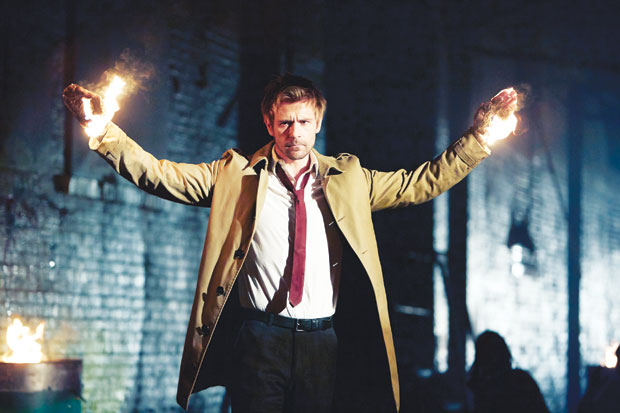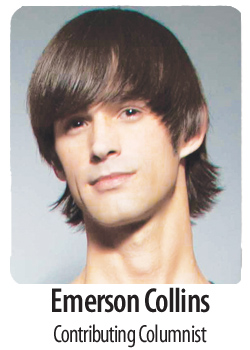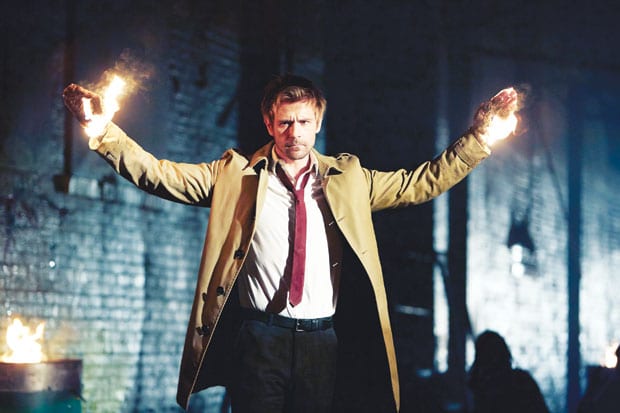It’s not enough networks give lip-service to gay inclusion; they must deliver

‘CONSTANTINE’ | NBC ‘straightened up’ the LGBT comic book character for its new TV show, which premieres Oct. 24.
 For the avid television watcher, the fall season is like Christmas — the major networks unwrap and roll out an all-new slate of shows and stories to dive into.
For the avid television watcher, the fall season is like Christmas — the major networks unwrap and roll out an all-new slate of shows and stories to dive into.
For the LGBT fan of all things television, this exciting time is tempered with expectations, waiting to see where and how LGBT characters and storylines appear in the new TV landscape.
How characters from the LGBT community are represented on television is important because it reflects where we are as a culture. It’s important that along with the progress we are making politically and legally, we also continue to be included artistically and socially. Tolerance is only one step on the way to understanding and acceptance, and the arts and media have the greatest ability to facilitate movement in that direction. How we are seen on TV by ourselves — and more importantly, by others — matters.
This fall includes out actors and LGBT storylines to be excited about, though in keeping with history, the landscape is still dominated by arcs of gay, white males. However, the trend of diversity is making tiny steps in telling stories of characters that move beyond the token gay with stereotypical mannerisms in an expectedly fabulous profession.
Mulaney, which debuted earlier this month, features Elliott Gould as a gay man outside the 18-49 demo; and out actor Wilson Cruz as the bestie of Octavia Spencer on Red Band Society, both on Fox.
Shonda Rhimes has a gay man in Viola Davis’ new potboiler How To Get Away With Murder. With her subversive ability to include characters whose minority characteristics are not their primary plot points, Rhimes has consistently made interesting and three-dimensional gay characters that are fully sexual beings including Callie and Arizona on Grey’s Anatomy and Cyrus and James on Scandal.
On Marry Me, Casey Wilson’s character was raised by gay dads — one black and one white. The McCarthys, starring Laurie Metcalf, centers around her openly gay son. Jane The Virgin has a lesbian doctor, and it is rumored that a gay villain will arrive quickly on The Flash.
Nick Jonas has been hinting all over the place that his character on DirecTV’s new mixed martial arts drama Kingdom is somewhere left of heterosexual (read our interview with Jonas at InstantTea). These new LGBT characters will add to ones on returning shows that continue to thrive.
It’s unfortunately typical that bisexual and transgender characters are nearly non-existent on the current landscape. One potentially bright spot is
Amazon’s Transparent featuring Jeffrey Tambor as a trans woman in a dramedy that is receiving high praise, as well as Laverne Cox on Netflix’s Orange is the New Black, though both are streaming shows, not available on the main networks.
Yes, you could have learned all of this from your TV guide, but the other important piece of LGBT characters on television is that we find the shows, watch them and support them.
There are many justifiable complaints about LGBT portrayals. It’s white-washed (still a problem for TV in general), many LGBT characters never behave as sexually as their cisgender, heterosexual counterparts and generally they often still have all of the traits of being a token. It also seems the simple solution that the way to avoid the token problem is to have more than one LGBT character at the center of a show is a regularly forgotten concept.
Showing up for the characters that do exist (and the shows that showcase them) is the best demonstration that there is an audience for our stories. It’s hard to imagine, given how we are often frustrated we are by the safeness or one-dimensional nature of the characters, but the network executives still see our stories and characters as risks and we need to support them when they work.
Supporting our characters and shows that introduce supporting and recurring LGBT characters and interesting LGBT storylines easily goes hand-in-hand with continuing to agitate for greater depth to our characters and a wider variety of representation.
It’s important to hold shows accountable for how they represent the LGBT community. Calling out offensive stereotypes and lazy or harmful stories (read: trans characters that are either murder victims or the perpetrators of “gotcha” gags) ensures our portrayals are wide, varied and representative.
However, it’s also important to be aware before being outraged in some circumstances. This fall, NBC is introducing Constantine, based on a beloved bisexual comic book character. Yet on TV, his sexuality will not be a part of the show, and that erasure is deserving of the attention and protests it has already received.
In other circumstances, perspective is important. When comedy gags seem stereotypical, asking questions is important. Is the stereotype being used to mock us, or those who hold the stereotype? Is the show “offensive” in all sorts of ways and using that to say something larger? Is the character expressing the homophobic, biphobic or transphobic attitude one the audience is supposed to relate to or despise? Because those attitudes and perspectives represent real people, too, and a knee-jerk reaction before considering the conversation a show is attempting can be a disservice.
Of course, outside of outright LGBT storylines there are also shows with queer sensibilities and the subtext of potential for non-heterosexual relationships.
It is a much more nebulous concept and can be a result of the actors, the setting or the general tone and subject matter of a show. Lately this has introduced a newer concept into the discussion of TV shows and characters called “queerbaiting.” It’s essentially the idea that a show is adding homoerotic tension to attract queer viewers without having any intention of every following through on it.
Using non-heterosexual behavior for attention is certainly worth protesting because it reinforces the idea that there is something more titillating or salacious about bisexual or homosexual relationships and sexuality. That said, it can also beg the question, “Are we asking for special treatment?” if we demand that shows and show runners direct their characters and plots in the way we want them to as LGBT fans.
It’s great to love a show. It’s great to love the characters. It’s wonderful when the idea that a character might be gay or bi is hinted at. If it does not happen, it’s important to genuinely consider whether what is happening is really any different than the massive amount of suggestion, misdirect and red herrings that all scripted shows introduce and dismiss in so many ways with all of their characters.
Demanding that a show follow through with a hint that a character might have a sexuality other than strictly hetero is ultimately not that different than demanding that two characters who demonstrate obvious romantic tension get together because we think they just need “to do it already.” Seeing the difference between having our attention taken advantage of and what is standard storytelling is the difference between having our protestations heard or brushed aside.
Our outrage is a useful tool in affecting change in the television landscape, but it needs to be used specifically and wisely to be effective. Similarly, our attention and viewership does the same thing. Showing up for great LGBT characters and storylines is the best way to ensure that we continue to get them and that they grow deeper and wider to continue to represent more of the vast array of our community.
So, set your DVRs. Check out how we are being seen on TV. When you find ones that are wonderful, tell other people. We have a long way to go, but each time it is done well, the closer we get to having to worry far less about stereotypical portrayals and can be excited about new LGBT characters not simply because they are from our community, but because of what else they are far in addition to that simply as great characters in great shows telling great stories, some of which happen to be ours.
Emerson Collins is one of the hosts of The People’s Couch on Bravo, which has just begun its new season.
This article appeared in the Dallas Voice print edition October 17, 2014.

